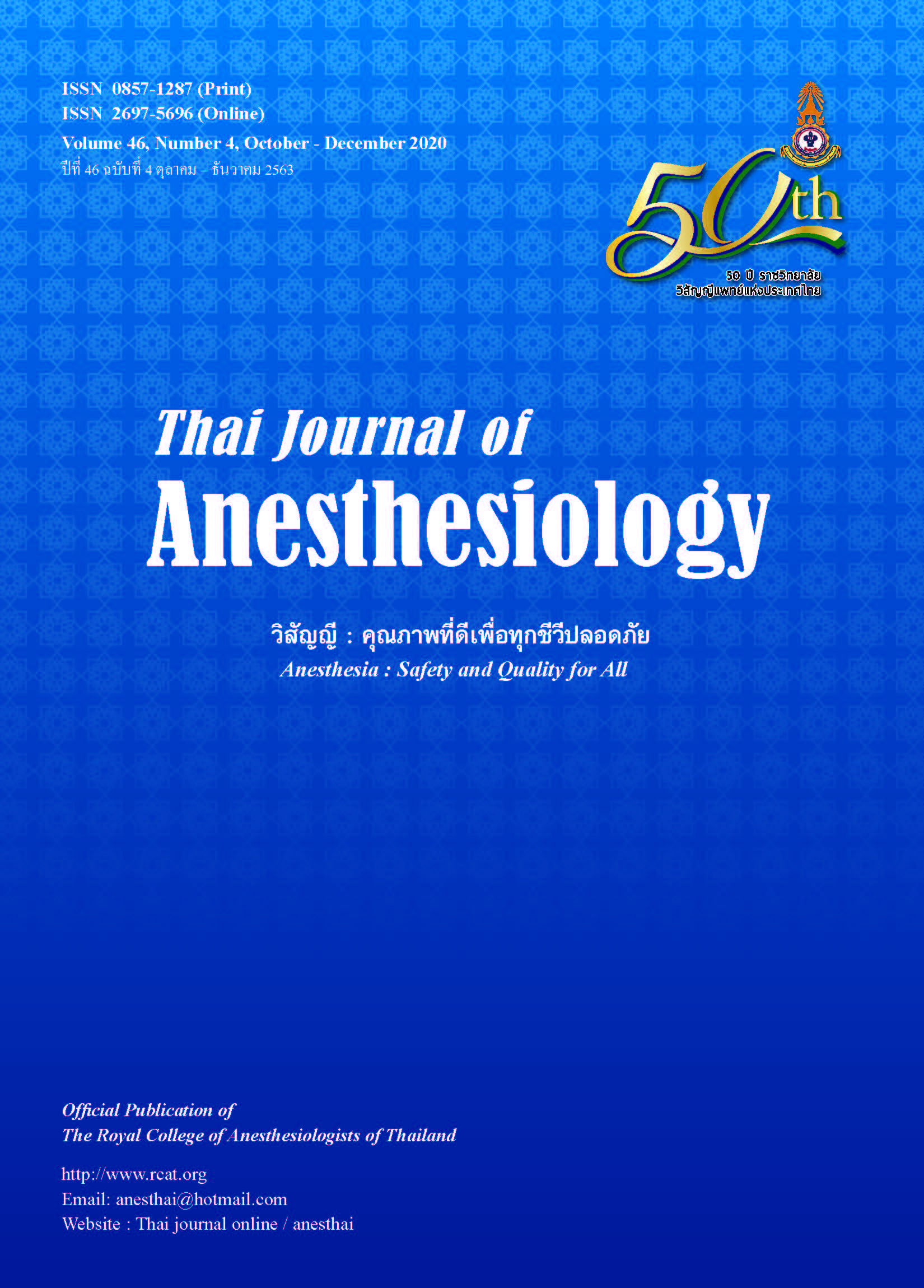Compared Lung Mechanical Effects between Desflurane and Sevoflurane at 1-1.5 MAC within One Hour in Patients who Received Balanced General Anesthesia Technique
Main Article Content
Abstract
Background: Desflurane has the lowest blood/gas partition coefficient and gives rapid onset and offset of effect. From previous studies Isoflurane, Sevoflurane and Desflurane all changes lung mechanics during general anesthesia, according to the amount of minimal alveolar concentration (MAC) of the inhaled anesthetic agent. Objectives: To compare the difference of lung mechanics including respiratory resistance (Rr), peak inspiratory pressure (PIP) and dynamic lung compliance (Cdyn) at 5th,10th,20th,60th minute between Desflurane and Sevoflurane in patients receiving balanced general anesthesia technique at 1-1.5 MAC. Methods: Single-blind randomized controlled trial was done during 1 July 2019 -31 April 2020 and recorded lung mechanic values at 5th,10th,20th,60th minute between Desflurane and Sevoflurane group. Results: We included 60 patients into this study, only Rr at the 5th minute in the Desflurane group was higher than Sevoflurane group (13.58 ± 1.73 cmH2O/L/sec vs. 11.69 ± 2.42 cmH2 O /L/sec, p-value 0.001). The other lung mechanics between the two groups were not statistically different. Rr in Desflurane group at the 5th minute was higher than the 10th, 20th, 60th minute in the same group (p-value = <0.001, 0.013, 0.002, respectively). Conclusion: Lung mechanics between the Sevoflurane and Desflurane group at 1-1.5 MAC was the only difference in respiratory resistance at the 5th minute. The other values were not statistically different.
Article Details
References
events in smokers and nonsmokers undergoing general
anaesthesia. Acta Anaesthesiol Scand 1997;41:348-55.
2. TerRiet MF, DeSouza GJA, Jacobs JS, et al. Which is most
pungent: isoflurane, sevoflurane or desflurane? Br J Anaesth
2000;85:305–7.
3. Dikmen Y, Eminoglu E, Salihoglu Z, et al. Pulmonary mechanics
during isoflurane, sevoflurane and desflurane anaesthesia.
Anaesthesia 2003;58:745-8.
4. Goff MJ, Arian SR, Ficke Dj, et al. Absence of bronchodilation
during desflurane anesthesia: a comparison to sevoflurane
and thiopental. Anesthesiology 2000;93:404-8.
5. Shima RW, Maurer A, King T, et al . A comparison of airway
responses during desflurane and sevoflurane administration
via a laryngeal mask airway for maintenance of anesthesia.
Anesth Analg 2003;96:701-5.


